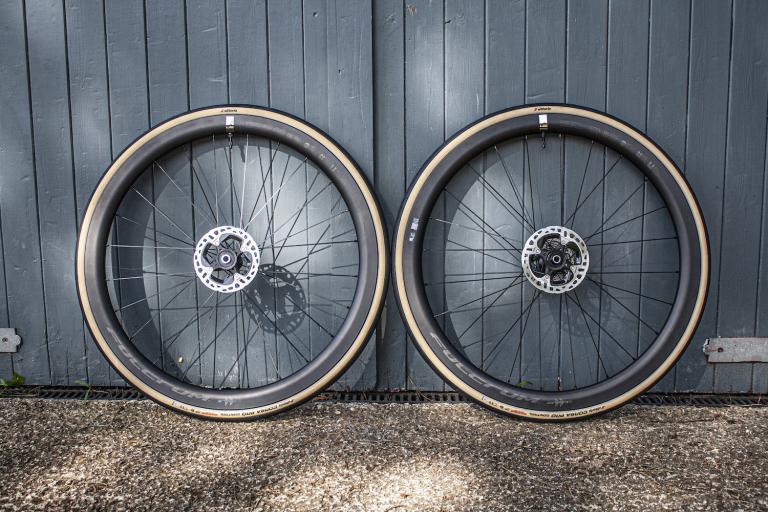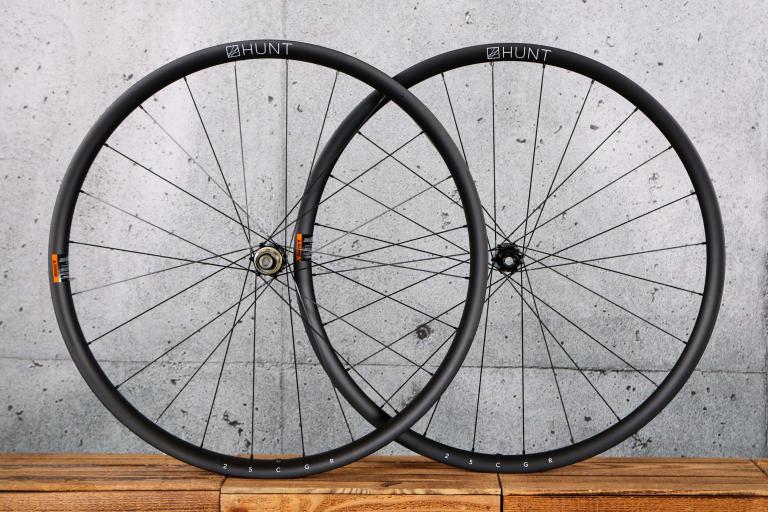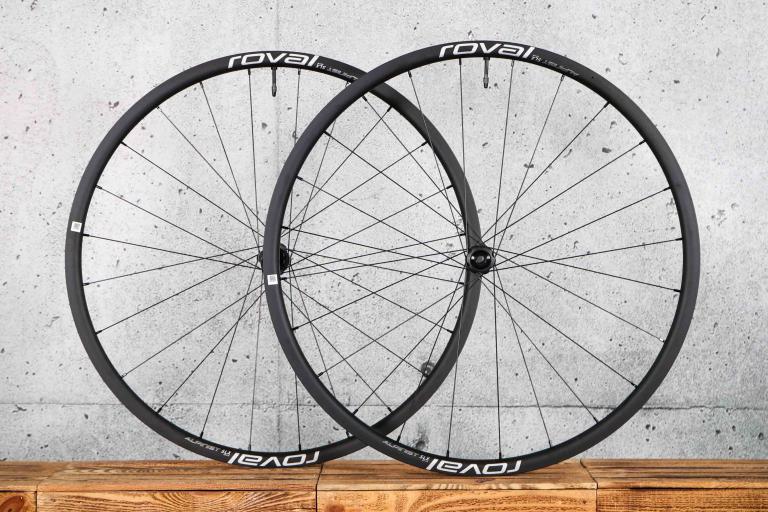- News
- Reviews
- Bikes
- Accessories
- Accessories - misc
- Computer mounts
- Bags
- Bar ends
- Bike bags & cases
- Bottle cages
- Bottles
- Cameras
- Car racks
- Child seats
- Computers
- Glasses
- GPS units
- Helmets
- Lights - front
- Lights - rear
- Lights - sets
- Locks
- Mirrors
- Mudguards
- Racks
- Pumps & CO2 inflators
- Puncture kits
- Reflectives
- Smart watches
- Stands and racks
- Trailers
- Clothing
- Components
- Bar tape & grips
- Bottom brackets
- Brake & gear cables
- Brake & STI levers
- Brake pads & spares
- Brakes
- Cassettes & freewheels
- Chains
- Chainsets & chainrings
- Derailleurs - front
- Derailleurs - rear
- Forks
- Gear levers & shifters
- Groupsets
- Handlebars & extensions
- Headsets
- Hubs
- Inner tubes
- Pedals
- Quick releases & skewers
- Saddles
- Seatposts
- Stems
- Wheels
- Tyres
- Health, fitness and nutrition
- Tools and workshop
- Miscellaneous
- Buyers Guides
- Features
- Forum
- Recommends
- Podcast
review
 Fulcrum Racing 3 wheelset
Fulcrum Racing 3 wheelset£549.99
VERDICT:
A good wheel choice if you're taking the tubeless plunge – responsive, strong and well-made. Stylish too.
Weight:
1,600g
Contact:
www.i-ride.co.uk
At road.cc every product is thoroughly tested for as long as it takes to get a proper insight into how well it works. Our reviewers are experienced cyclists that we trust to be objective. While we strive to ensure that opinions expressed are backed up by facts, reviews are by their nature an informed opinion, not a definitive verdict. We don't intentionally try to break anything (except locks) but we do try to look for weak points in any design. The overall score is not just an average of the other scores: it reflects both a product's function and value – with value determined by how a product compares with items of similar spec, quality, and price.
What the road.cc scores meanGood scores are more common than bad, because fortunately good products are more common than bad.
- Exceptional
- Excellent
- Very Good
- Good
- Quite good
- Average
- Not so good
- Poor
- Bad
- Appalling
Fulcrum wheels are available for all types of road cycling, with the Racing 3s about mid-way along the range, aimed at training, sportive or entry-level racing duties. The '2-Way Fit' version is designed for tubeless tyres; they're called '2-Way Fit' because you can also run them with normal clinchers and inner tubes.
Tubeless wheels and tyres are still relatively new for road bikes, although they've have been around for a few years in the mountain bike world, where their main advantage is puncture resistance. With no inner tube, impact punctures or 'snakebites' are impossible – especially handy when running tyres at lower pressure to get across mud and gravel.
Before we go any further, a clarification might be needed. These are tubeless tyres, which means they're tyres that fit straight onto the rim, with no inner tube. This is totally different from tubular tyres (aka tubs), which are sometimes erroneously called 'tubeless' because the inner tube is not visible inside the cylindrical tyre casing. But you knew that, didn't you?
To test these Fulcrum 3s, the first thing we needed was a set of tyres. Fortunately, we'd just been sent a pair of Hutchinson Intensives (which we'll review in more detail separately). Unfortunately, fitting them was not straightforward. Firstly because they're a tight fit to get the airtight seal between tyre bead and inner rim, and secondly because the internal section of the Fulcrum 2-Way Fit rim is a different shape from a normal clincher rim, with a narrow and shallow well, which means there's less room for the beads of the tyre to sink into.
The first bead went on the wheel okay, but the last few inches of the second bead was difficult to get over the rim, even with a dash of washing up liquid (as per instruction leaflet) to help lube it over.
In addition, the Fulcrum tubeless-specific valve added an extra layer of trickiness to the fitting process. As there's no inner tube involved, the valve is fitted to the rim with an airtight seal involving a cube of rubber that sits inside the well of the rim. The beads of the tyre have to slot between this cube and the inside of the edge of the rim, and there's not a lot of space.
But all the effort of tyre-fitting was forgotten once we'd got the wheels fitted to a bike and were out on the first test ride. The wheels felt great. They were absolutely true out of the box. And with taut spokes, they immediately felt responsive. There was no sign of sluggishness on acceleration, and no sound of rims touching brake blocks even when pushing hard out of the saddle on uphill sections.
But one short ride wasn't enough. So the next jaunt was a 60-mile bash round the post-industrial landscape of the East Midlands. Not the most scenic of areas (sorry, North Notts), but damaged roads gave the wheels a thorough strength-test. We even hammered them down some sections of rough unsurfaced byway.
Two days later, and we were out again. This time clocking almost 100 miles around the Peak District, with more potholes, cattle grids and exposed drain-covers to contend with, not to mention some steep hills. On both rides, the wheels didn't miss a beat, feeling positive and responsive on all the climbs and descents. And despite all the knocks they were still perfectly true when we got back home.
The responsive feel seems party due to the unconventional spoke arrangement on the rear wheel, with 14 spokes on the cassette side, and seven spokes on the other side. According to Fulcrum, twice as many spokes on the driveside means the wheel holds its shape when under power. That makes engineering sense, and works in practice too.
Despite having just 16 spokes, the front wheel felt rigid too. Appearance means nothing if performance is bad, of course, but it has to be said these spoke patterns make the wheels look pretty stylish too.
The downside to the wheels' rigidity is a stiff ride, bordering on the harsh when roads are bad, but wheel-building is always a compromise between comfort and responsiveness, and for training, sportive or basic racing the Fulcrum 3s seem to have the balance just about right.
It's an open secret that that Fulcrum wheels are made by Campagnolo - but with Shimano/SRAM-compatible freehubs. The parent brand's long-standing reputation for quality seems to be shared by the more recent offshoot (although the C-word is never mentioned in Fulcrum's advertising material).
The spokes are straight-pull with no bend at the hub, and bladed for aerodynamic advantage, so with the wheels you get a gadget to hold the spokes in place (narrow edge to the wind) if you need to true them up. The spoke nipples are conventional type, and there's another gadget to help you replace them in the rim, should the need arise. It's basically a magnet to chase the nipple round the inside of the rim. Thanks to the tubeless fit, the inside section of the rim is a solid strip, meaning you can't fit nipples through the rim in the usual way. The rims are of slightly different depths: 26mm in the front wheel, 30mm in the rear.
Overall, these wheels are strong, stylish and well-made, and give a great ride. The tubeless version is certainly as good as the standard Fulcrum Racing 3s – although they are slightly heavier (by about 75g the pair), but this is offset by the lack of the weight of two inner tubes.
If you've made the switch to tubeless (or are about to) then these wheels are a good choice. The recommended retail price is around £540 the pair, and you can easily find them under £500 with a bit of web trawling.
The Fulcrum 3s might also be something to consider if you want to wait a while before deciding whether to go tubeless or not: the 2-Way Fit means you can run normal clincher tyres with inner tubes on them at first, then switch to tubeless a bit later. Conversely, if you buy these wheels to run tubeless tyres but don't get on with the new technology, you can fit standard tyres and tubes and still have a very decent pair of wheels to play with.
Verdict
A good wheel choice if you're taking the tubeless plunge – responsive, strong and well-made. Stylish too.
road.cc test report
Make and model: Fulcrum Racing 3 wheelset
Size tested: n/a
Tell us what the product is for, and who it's aimed at. What do the manufacturers say about it? How does that compare to your own feelings about it?
Here's what the Fulcrum website says:
'We have developed our 2-Way Fit™ technology to ensure the perfect compatibility of our tubeless rims with normal clincher types and tubes. 2-Way Fit™ wheels are perfectly multipurpose for tackling every situation. ... Housing the valve for tubeless tyres is also risk-free, with the unquestionable advantage that there are never any air infiltrations caused by non-ideal positioning when fitting.'
To be honest, the meaning of that last sentence is unclear, but it probably means that you can't accidently fit a valve in the rim the wrong way.
The website goes on to say:
'Tubeless tyres do not suffer from sudden deflation when punctured which is a great advantage in safety terms. There is also no risk of snake bites as there is no tube to rupture. What if a tubeless tyre gets punctured? There's nothing to fear... With Fulcrum 2-Way Fit you can remove the tubeless valve and fit in a standard clincher tire that will let you ride back home.'
Presumably, they mean you can fit a standard inner tube if your tubeless tyre gets punctured.
Tell us some more about the technical aspects of the product?
The Fulcrum website boasts several more features on the Racing 3 2-Way Fit wheels, including:
Ultra-Fit - "...the sides of the tyre mate perfectly with the shoulders of the rim... By eliminating every possible movement between the rim and tubeless tyres, all energy dispersion is also eliminated."
Dynamic Balance - "...is obtained by using two oversized spokes in the section opposite the joint. The result is a wheel with perfectly balanced rotational dynamics."
Anti-Rotation System - "...spokes and the hub housings create a solid and unmoveable whole. The result is that the spokes will never lose their initial tension, thus keeping the wheel perfectly reactive and centred, and will remain in the position that was found in wind tunnel tests to ensure the best aerodynamic penetration possible."
Rate the product for quality of construction:
8/10
The wheels seem very well-made. They were perfectly true out of the box and have held their shape during testing over some very rough roads.
Rate the product for performance:
9/10
Performance is excellent. The wheels are stiff and responsive, with no flex - even when out of the saddle, swinging the bike from side to side far more than necessary.
Rate the product for durability:
8/10
Early indications are that the wheels will last for a good while.
Rate the product for weight, if applicable:
8/10
1600g is very acceptable for a pair of strong wheels.
Rate the product for comfort, if applicable:
7/10
These wheels are stiff and responsive, but they can't be described as very comfortable - but they're not designed to be especially comfortable. The balance between comfort and rigidity is about right.
Rate the product for value:
8/10
Tell us what you particularly liked about the product
The wheels were stiff and responsive - excellent for sportives and general riding in hilly country.
Tell us what you particularly disliked about the product
Fitting tyres was tough - but often is with tubeless kit.
Did you enjoy using the product? Yes
Would you consider buying the product? Personally, I'm not convinced by the move to tubeless on road bikes. Punctures are more unlikely than on standard clinchers, but if you get a flat they're much harder to fix
Would you recommend the product to a friend? Yes, if they were a tubeless convert
About the tester
Age: 50 Height: 5ft 10 / 178cm Weight: 11 stone / 70kg
I usually ride: an old Marin Alp My best bike is: an old Giant Cadex
I've been riding for: Over 20 years I ride: A few times a week I would class myself as: Experienced
I regularly do the following types of riding: touring, club rides, sportives, general fitness riding,
Latest Comments
- anagallis_arvensis 11 min 46 sec ago
It was, two cars did so, the solid line was ending, the road fairly straight the view clear. Are you seriously suggesting cyclists should alter...
- Oakhambike 14 min 46 sec ago
£11.5k for a bike weighing over 8kg that's 2 fingers to customers let alone UCI
- HarrogateSpa 16 min 26 sec ago
No trees need to be cut down for a cycleway....
- Dnnnnnn 30 min 4 sec ago
I'm going to show my bike a picture of this shed and tell it, "If you don't behave..."
- Hirsute 1 hour 17 min ago
Ex black cab https://twitter.com/KingArtAT/status/1783296299787309088
- bensynnock 2 hours 13 min ago
Quite. I was wondering where the cycling infrastructure is located that causes drivers to go 90 on the M3?
- I love my bike 2 hours 42 min ago
If one is prepared to pay £28 for a TPU tube, the butyl comparison should be Continental's Supersonic ~50g or Schwalbe at 70g. Both costing £8 - ...




Add new comment
4 comments
perhaps the 30mm rear and the 26mm front rim stiffened it up i notice quite a difference in comfort between 24mm rims compared to 30mm rims... but this could also be down to the spokes, hubs, tire choices etc.
i notice quite a difference in comfort between 24mm rims compared to 30mm rims... but this could also be down to the spokes, hubs, tire choices etc.
Thanks for those comments, chaps.
@ cat1commuter - Just to clarify, I don’t think I was advocating ‘poorly-tensioned spokes’, but I do think it’s fair to say that building wheels involves a compromise between comfort and responsiveness.
Obviously, spokes that are too loose or too tight will result in breakages or wheels going out of true, but it's my understanding that the relative degrees of comfort and responsiveness are achieved from the spoke lacing pattern - radial, two-cross, three-cross, or whatever. These Fulcrum 3s are radial in the front, with a mix of radial and two-cross in the rear. As I say in the review, that makes them responsive but they give a stiff ride - a balance that seems just about right.
I hope that clarifies.
cheers
David
Separate to the discussion about spoke lacing patterns, it’s also worth noting that the Fulcrum 3 Two Way Fit rim design affects the stiffness too; because there are no holes for spoke nipples drilled through the rim bed it's significantly stiffer than a standard rim.
Really? That got the needle on my BS meter wagging. What's the vertical deflection on a "comfortable" wheel then? A badly built wheel with poorly tensioned spokes distorts when you hit bumps in the road, which can lead to nipples loosening and spokes breaking.
I had a pair, but swapped to Dura-Ace 7900 C24s and have never regretted it. Admittedly the R3s were old (circa 2008 models I purchased in mid 2009)and had had a bit of abuse. I'd recommend the DAs any day, though maybe they are at a higher price poinht than these Fulcrums.